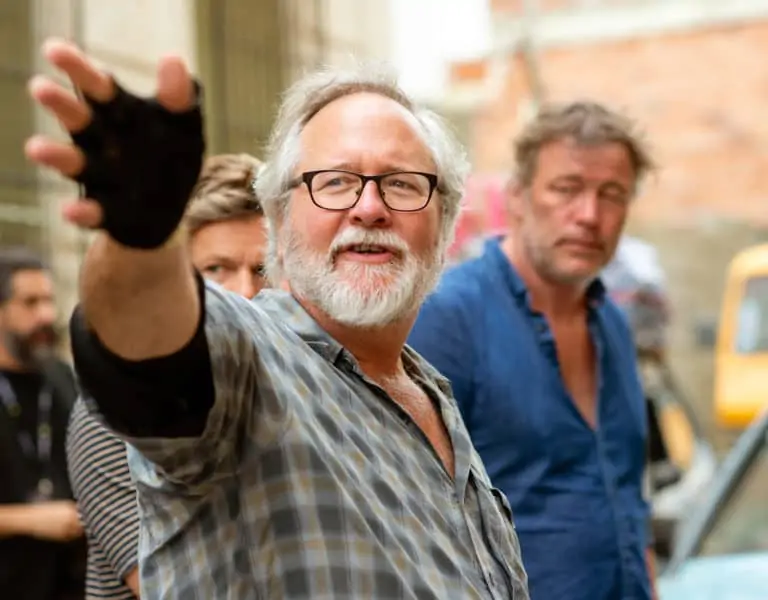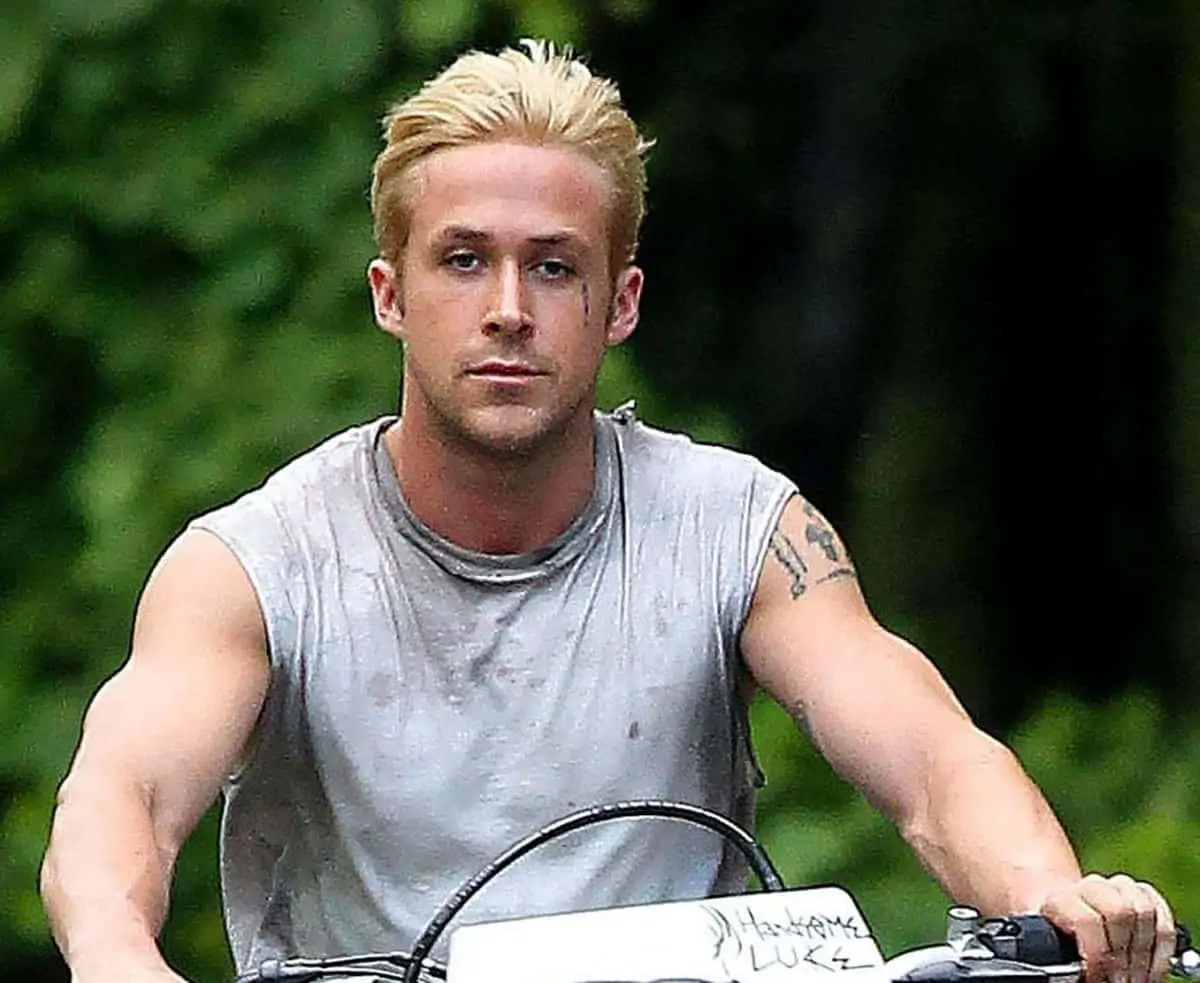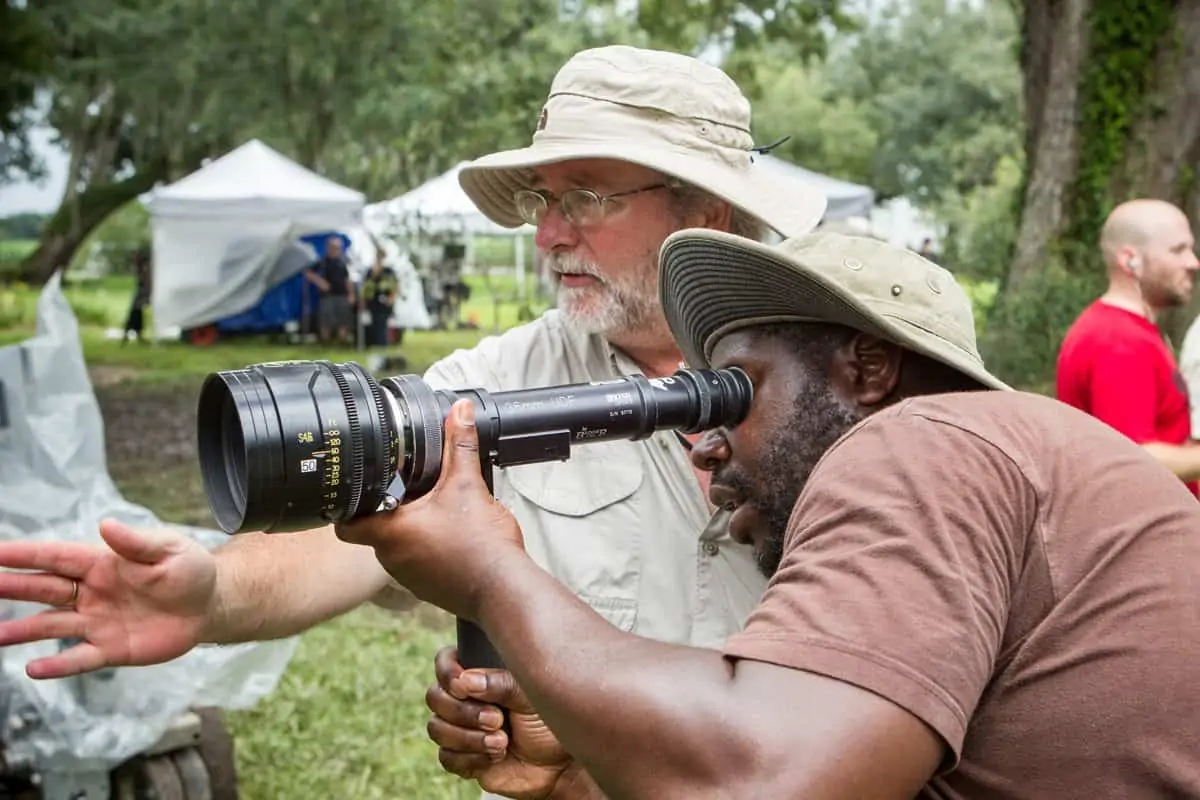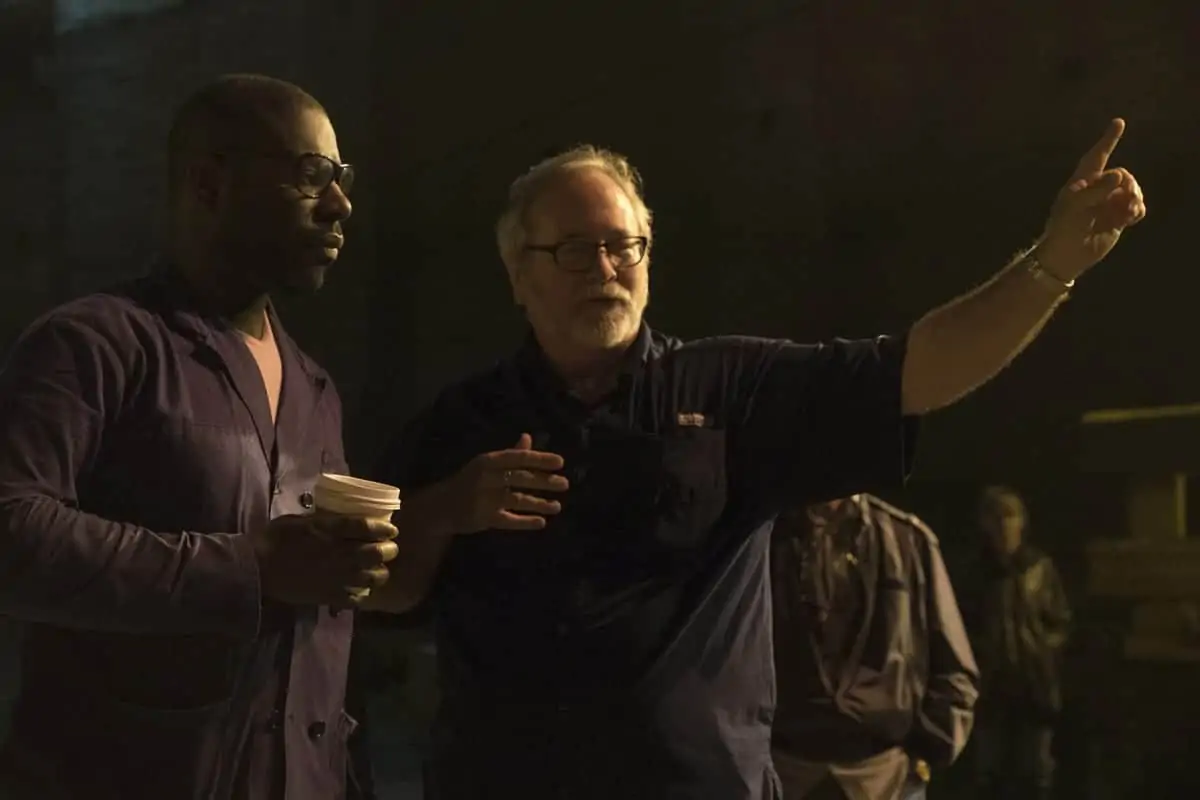The Facts Of Life
Sean Bobbitt BSC / On Chesil Beach
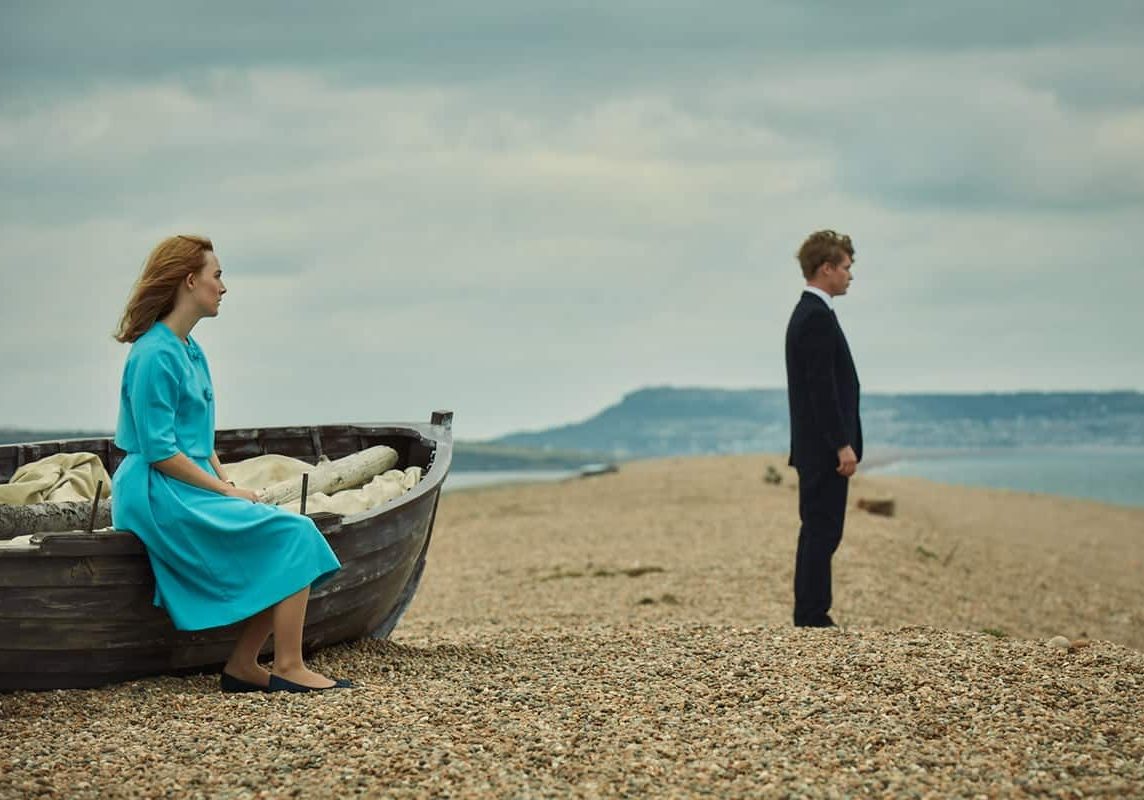
The Facts Of Life
Sean Bobbitt BSC / On Chesil Beach
BY: Ron Prince
“Although there were some physical and logistical challenges, it was a really charming film to work on,” is Sean Bobbitt BSC’s immediate recollection about his time spent as cinematographer on On Chesil Beach, the first full-length feature to be helmed by renowned theatre director Dominic Cooke.
“The combination of Dominic’s inspirational vision, the support of the producers, Liz Karlsen and Stephen Woolley, a fantastic cast of actors and a really great crew, made for an extremely enjoyable experience, where everyone just got on together.”
Shot on Kodak 35mm film in 2-perf, with spherical lenses, On Chesil Beach was adapted for the screen by author Ian McEwan from his 2007 Booker Prize-nominated novella of the same name. Set in England in 1962, the film follows newly-wedded couple, Florence Ponting (Saoirse Ronan) and Edward Mayhew (Billy Howle), whose idyllic romance suddenly founders amid the shifting zeitgeist of the time – from the world of the 1950s stiff-upper-lip to the dawn of the swinging ‘60s. The honeymooners, both recent graduates from Oxford, are virgins – apprehensive, awkward, lacking in sexual experience, and woefully ill-equipped to deal with their respective upbringings and social expectations. She is a talented young violinist with big ambitions, and hails from a wealthy, buttoned-down, family. He’s a feisty country boy from a somewhat blemished family background that can only offer love. Both have trouble making the first move to consummate their marriage in their modest Dorset hotel room, and events rapidly lead to an awkward and fateful wedding night.
The film premiered at the 2017 Toronto Film Festival, where it garnered many positive reviews for the director, actors and Bobbitt’s “bare and beautiful cinematography”, which immerses the audience into the lives of the conflicted characters in surreal and desolate surroundings.
Principal photography started on October 17th, 2016 and concluded 36 shooting days later on November 29th. Along with sets built at Pinewood, the production also encompassed locations in Oxford and the surrounding countryside, as well as Dorset and Chesil Beach itself – a UNESCO World Heritage Site, located along the Jurassic Coast.
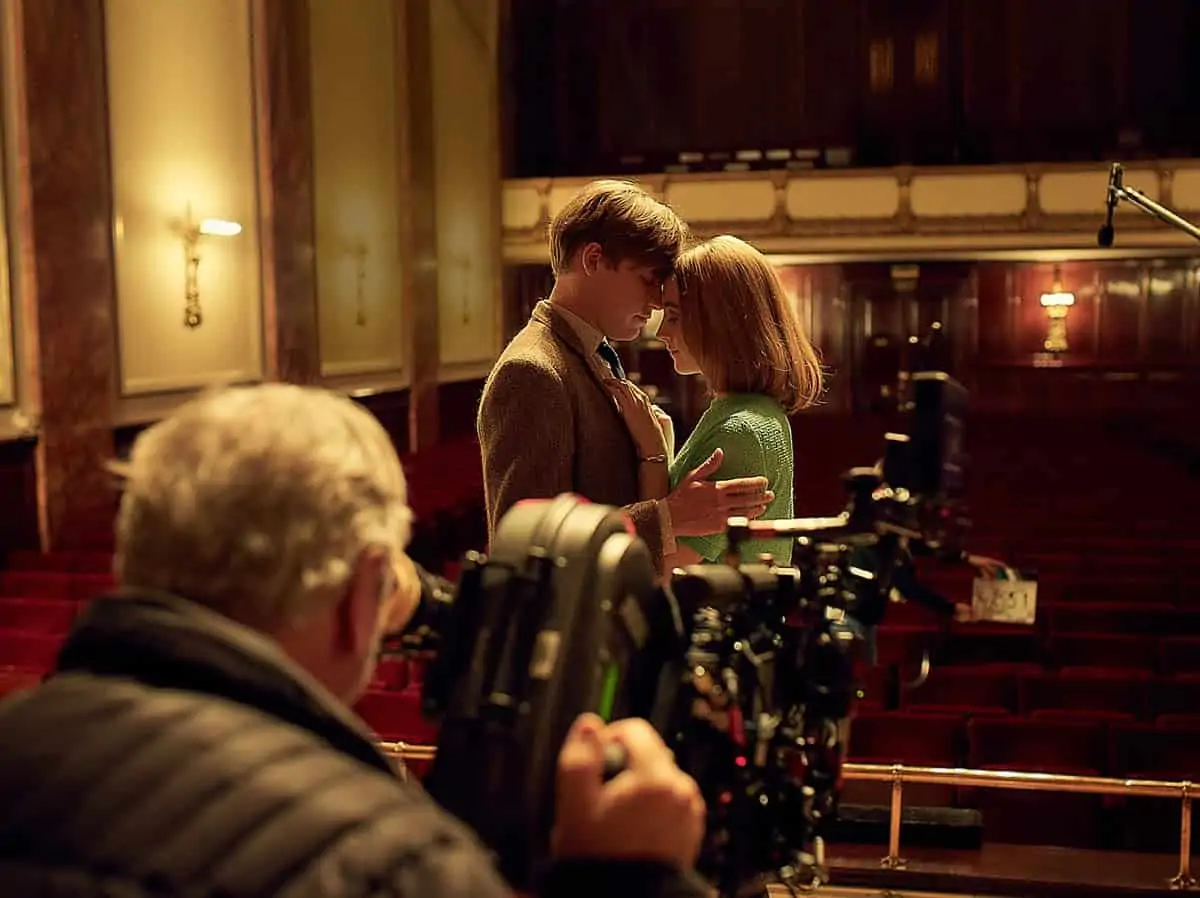
“I had not worked with Dominic before, but had been interviewed by him previously for The Hollow Crown,” says Bobbitt. “I remember being immediately impressed and thought I would really enjoy collaborating with him. However, another project came along and the timings were such I was unable to work on that production.”
But what goes around comes around, and the script for On Chesil Beach arrived at a separate juncture. Initially, Bobbitt says he was not aware of Cooke’s involvement, and whilst he admits to being intrigued by the idea of the story, he found the idea of shooting a period drama much less appealing.
“The UK has a fascination for period dramas based upon a book, a person or an event, and I tend not to find that genre particularly interesting from a cinematographic point-of-view,” he says. “It was only when I discovered that Dominic was to direct, that my interest changed. We met and I immediately saw his idea was far beyond the simplicity of a straightforward period piece.”
He explains further: “The story is set in a specific moment in history, when a repressed, almost Victorian, culture of the late 1950s started to be dominated by the liberating revolution of sex and society that came with the 1960s. It was a fascinating and complex period of time, and Dominic wanted to use a fragmented narrative that jumped back-and-forth between the past, present and future of our characters’ lives, to reveal the tectonic shifts taking place. Also, with this being a British affair, there was a whole class element going on too, as a subtext to the story.”
Bobbitt makes a point of never reading a book associated with a project. “I don’t want to feel in conflict with what a book did and what the filmic adaptation aims to do. I’m employed to make a film and not re-interpret a novel, so I consciously stay away from that,” he says. “However, I was aware that Ian had adapted the script, and knew the relationship between him and Dominic was good. Ian is a fine writer and chronicler of human emotions, and Dominic is one of the UK’s pre-eminent theatre directors. It was a great recipe that could be nothing but positive.”
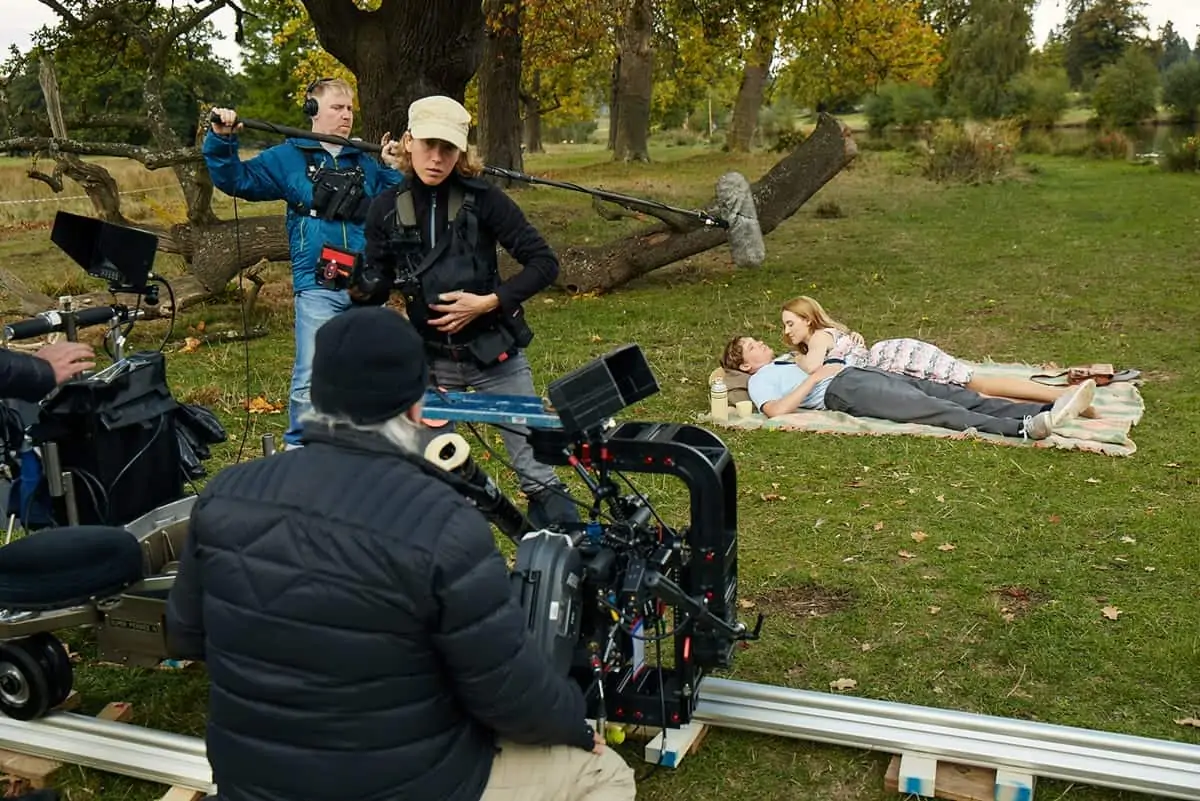
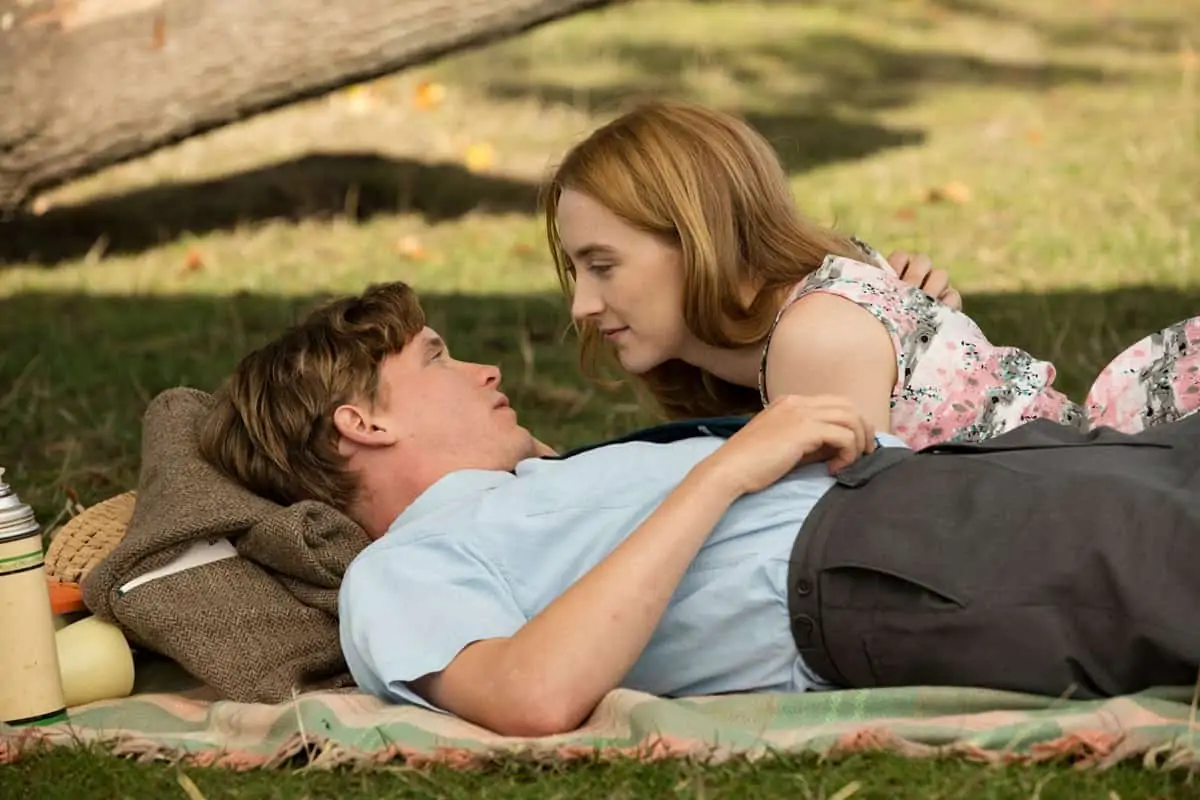
Abstaining from reading McEwan’s novel, Bobbitt got a handle on the visual treatment for On Chesil Beach from watching a trio of productions from that era – A Taste Of Honey (1962, dir. Tony Richardson, DP Walter Lassally BSC), Saturday Night And Sunday Morning (1961, dir. Karel Reisz, DP Freddie Francis BSC) and The Misfits (1961, dir. John Huston, DP Russell Metty).
“A Taste Of Honey and Saturday Night And Sunday Morning were British cinema waking-up, but not quite finding the style of the French new wave,” he says. “In some ways they are visually cumbersome, but they are very simple and very effective because of that. You look at the pace of those films, and they can feel almost excruciating in a modern context. There’s no great rush to tell the story; the narrative evolves and gnaws at you. Every preceding scene has a context and a reason. You can feel the story building, but not exactly what is building. They are both also very naturalistic, and you feel they aren't lit. We wanted to create a complete world of that period, and went for a natural look with our lighting too.
“Overall, The Misfits was probably the most inspiring visually for us. It’s a deeply flawed film, but in its visual simplicity, it is absolutely fascinating and it had a great influence on our discussions as to the look of our production. I think it also sparked our desire to shoot on film.”
Bobbitt remarks that the decision to shoot on film was a crucial element in creating the look for On Chesil Beach. “With film you automatically get a period look, and that’s partly how we sold the idea of celluloid capture to the producers. If you also look at the maths of shooting on 2-perf stock, it stands-up financially, and is probably cheaper, than shooting on Alexa in ARRIRAW. What’s more, 2-perf gives you a widescreen 2.40:1 aspect ratio and this lent itself to the isolated, disconnected look we wanted to achieve. There was really no film versus digital battle at all, and production embraced our idea quickly.”
Processing of the exposed negatives was done at i-Dailies (now Kodak Film Lab London, based on the Pinewood lot), under the auspices of Clive Noakes. “I was really chuffed to have Clive as our lab liaison,” Bobbitt declares. “He’s a legendary figure, one of the greats of the British film lab world.”
Bobbitt selected three Kodak Vision3 35mm filmstocks for the shoot – Kodak 50D (5203) for day exteriors, Kodak 250D (5207) for interiors and overcast days, and Kodak 500T (5219) for night time exteriors and interiors.
“Kodak 50D is a stunning stock, noted for its fine grain and strong clean colour palette,” enthuses the cinematographer. “It has a good exposure latitude too. A big element in this film was nature. Edward comes from the countryside, whereas Florence is from an urban middle-class intellectual background. Exteriors recounting their conflict take place in the countryside – partly due to the script, and partly due to the trickiness of finding period locations – and the 50D gave a beautiful look to these scenes.
“Most importantly, however, the final third of the film – its dramatic heart and soul – takes place on Chesil Beach itself, where we spent three days. The 50D delivered a really rich and punchy negative, and it was fundamental to the imagery in the most powerful and emotionally striking part of the film.”
Whilst the 250D was used chiefly for interiors, Bobbitt says, “it’s also a great failsafe for the British weather. If it gets cloudy and overcast on exteriors, it's handy to have the 250D in your back pocket.”
As for the 500T, Bobbitt says he tended to push the 500T by one stop, effectively rating it a 1000ASA on exteriors. “The 500T is phenomenal, so clean, even when pushed by a stop. There’s only a merest increase in grain on the 2-perf image, where the grain is nicely inherent already.”
"The final third of the film – its dramatic heart and soul – takes place on Chesil Beach itself, where we spent three days. The 50D delivered a rich and punchy negative, and it was fundamental to the imagery in the most powerful and emotionally striking part of the film."
- Sean Bobbitt BSC
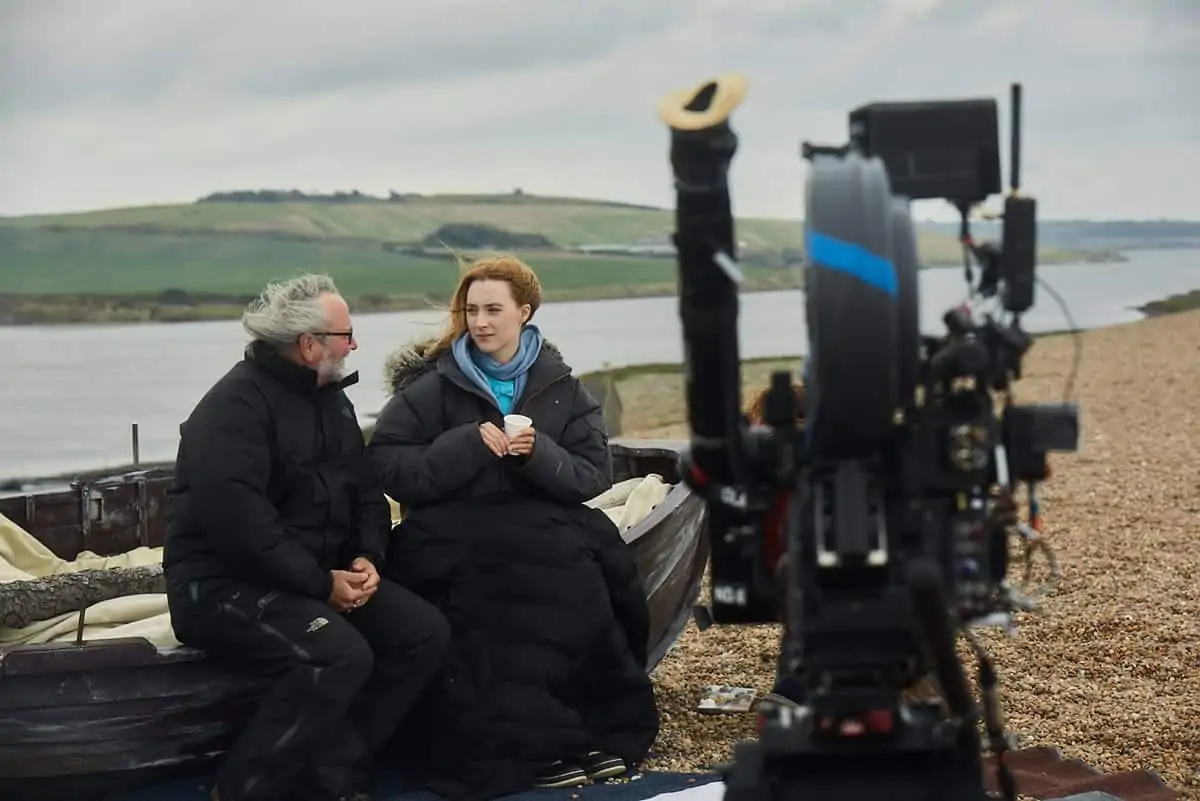
Bobbitt selected Cooke S4i and Optimo zoom lenses for the shoot, using Arricam ST on the dolly, plus Arricam LT for handheld and Steadicam shots – supplied by ARRI Rental in London. On Chesil Beach was executed mainly as a single camera shoot, with Bobbitt operating for the majority of the production, assisted by first AC Fran Weston and second AC Lawrence Beckwith. Additional B-camera and second unit photography was beautifully captured by Nic Lawson. First ACs Meritt Gold, Graham Martyr and Derik Peters, plus second ACs Dan West, Harry Wingate and Sandra Pennington were also variously involved on the main unit and additional photography. The gaffer was Brian Beaumont.
“I’ve been working in the US so much, that it was fantastic to get back working with my UK crew, who I miss very much indeed. I can't thank them enough for their skills and energy,” Bobbitt says.
Whist the story switches between time periods, Bobbitt felt little need to differentiate between them visually, preferring the effect to be rendered through the exquisite work of production designer Suzie Davis, a key cinematographic collaborator, together with commensurate changes in wardrobe, costume, make-up and locations. That said, he did employ different camera movement techniques to portray the different family lives of the protagonists.
“Taking our cues from the films we’d looked at – especially The Misfits where they held the frame for many of the compositions, and restricted most movement to a simple, but powerful pan – a lot of our camera movement was purposefully traditional, on tracks and dolly. However, we chose to create a visual contrast between the home lives of Edward and Florence, by introducing Steadicam – most beautifully operated by Simon Woods – in order to point-up the rural life and obstreperousness of Billy’s character versus the staid and repressed nature of Florence’s household.”
Whilst cinematographers often cite time and/or the need to achieve consistency as being their biggest challenges in feature production, Bobbitt says the hero location of Chesil Beach itself proved the single greatest test. The shingle beach is 18 miles long, 660ft wide and 50ft high, and is a barrier beach enclosing a shallow tidal lagoon, called The Fleet. It is an area of Special Scientific Interest, governed by strict conservation laws. The location chosen for the film’s climactic scene was near the middle of this long stretch, and access regulations stipulated that the crew could only use a rowing boat to ferry the filming equipment across. Along with lights, cameras, lenses, dolly and tracks, this also included the considerable paraphernalia of a large crane, which was essential for a poignant, but complex shot of the protagonists. Although there was a tractor on Chesil Beach itself to assist in moving the apparatus around, Bobbitt remembers it being quite brutally demanding to load the rowing boat and to then physically carry the equipment across the shingles. He praises key grip Jem Morton and his crew, “for sorting it wonderfully. Our crane shot represents a great team effort, and is something we are all very proud of.”
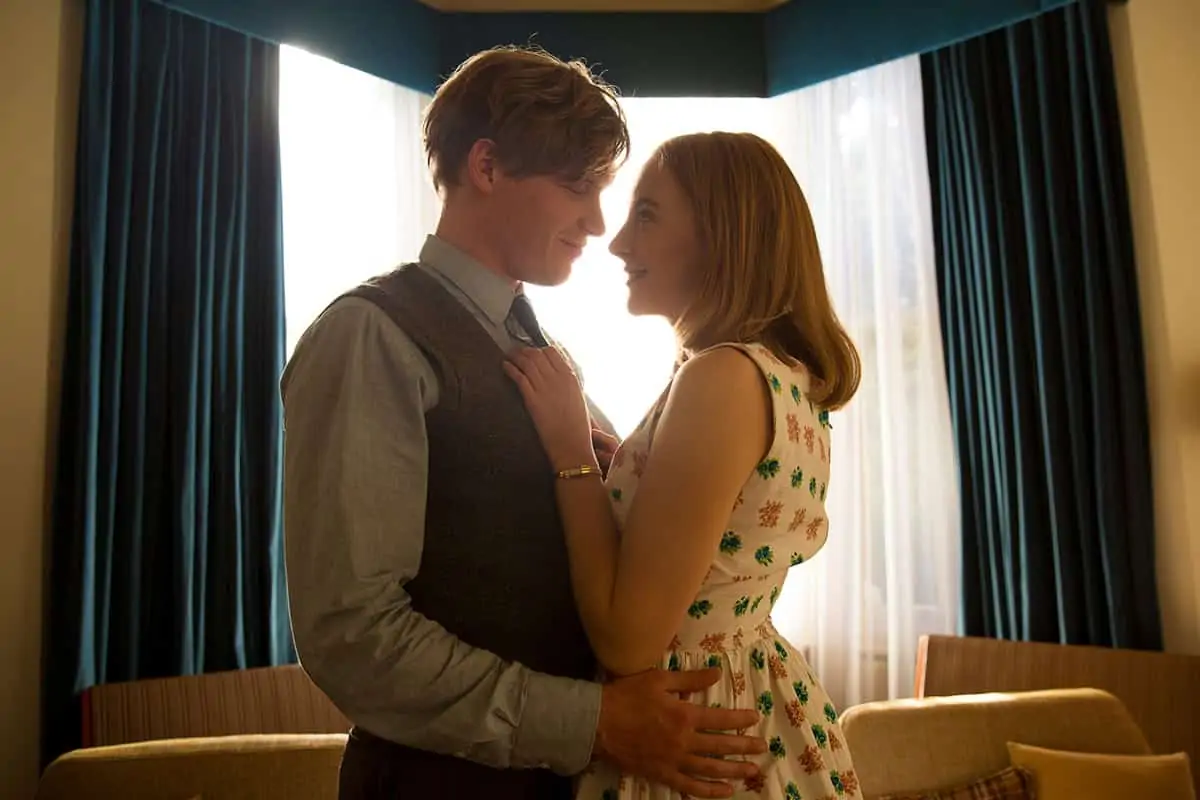
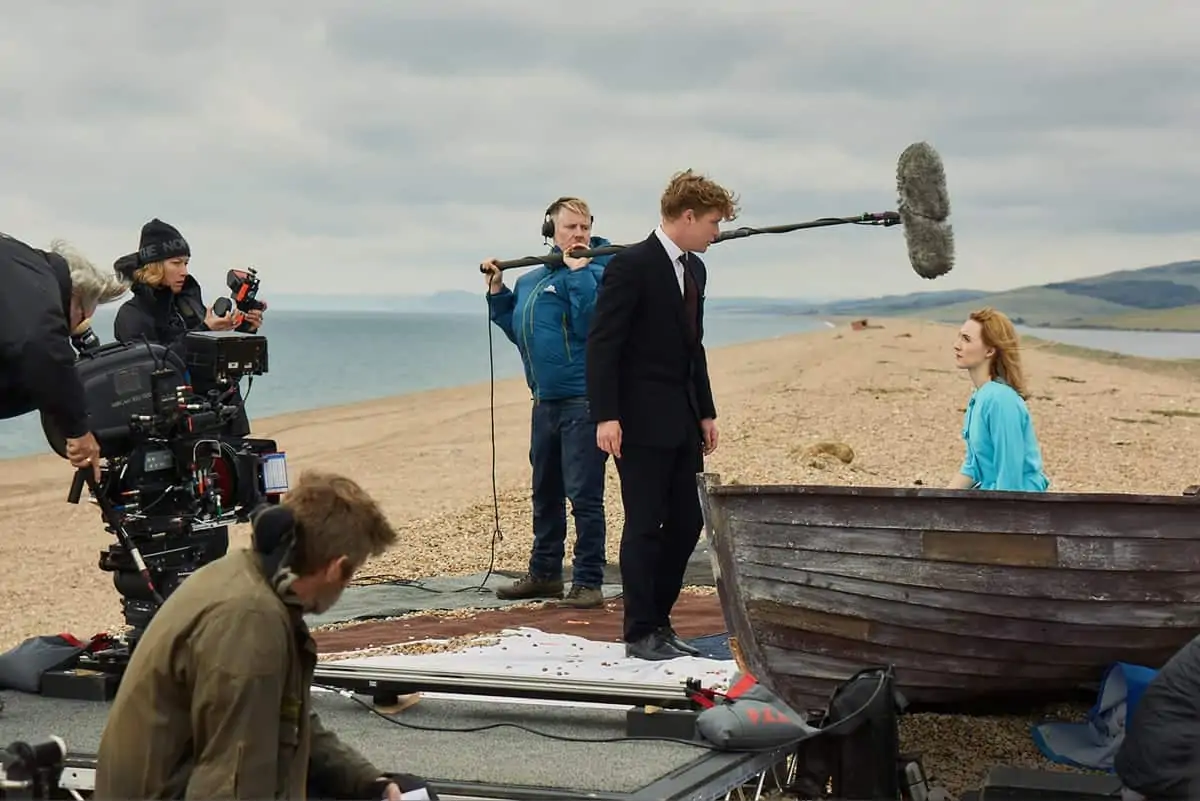
Notwithstanding the physical logistics, the British weather also played its part. As Bobbitt explains: “The climactic scene on Chesil Beach takes up nearly 15 minutes of the film. As we were aiming to shoot there for several days, what we really wanted for the story and continuity was a spell of overcast and menacing weather. During some of the recces it had been almost impossible to stand up on the beach due to the ferocity of the wind. All sorts of contingencies were put into the schedule as we really didn’t know what sort of conditions we would encounter. But when it came to it, we got exactly what we wanted – a nice brooding light.”
Bobbitt is most admiring of a simple, subliminal visual treatment that his director insisted upon. “Coming from the world of theatre, Dominic has a wonderfully mature and specific visual sense. In the first two thirds of the film, he insisted that the characters move continuously from left-to-right, as if moving towards something positive. But when their world falls apart, their movement switches from right-to-left, towards something negative. It created some difficulties, but we were able to work with it, and I have nothing but the highest regard for Dominic in holding on to his idea.
The cinematographer is also full of praise for the mood instilled by the director, which suffused the entire production. “Dominic is a very eloquent man who could express his ideas so clearly and beautifully. His approach and persona made this production extremely enjoyable for everyone concerned.”








